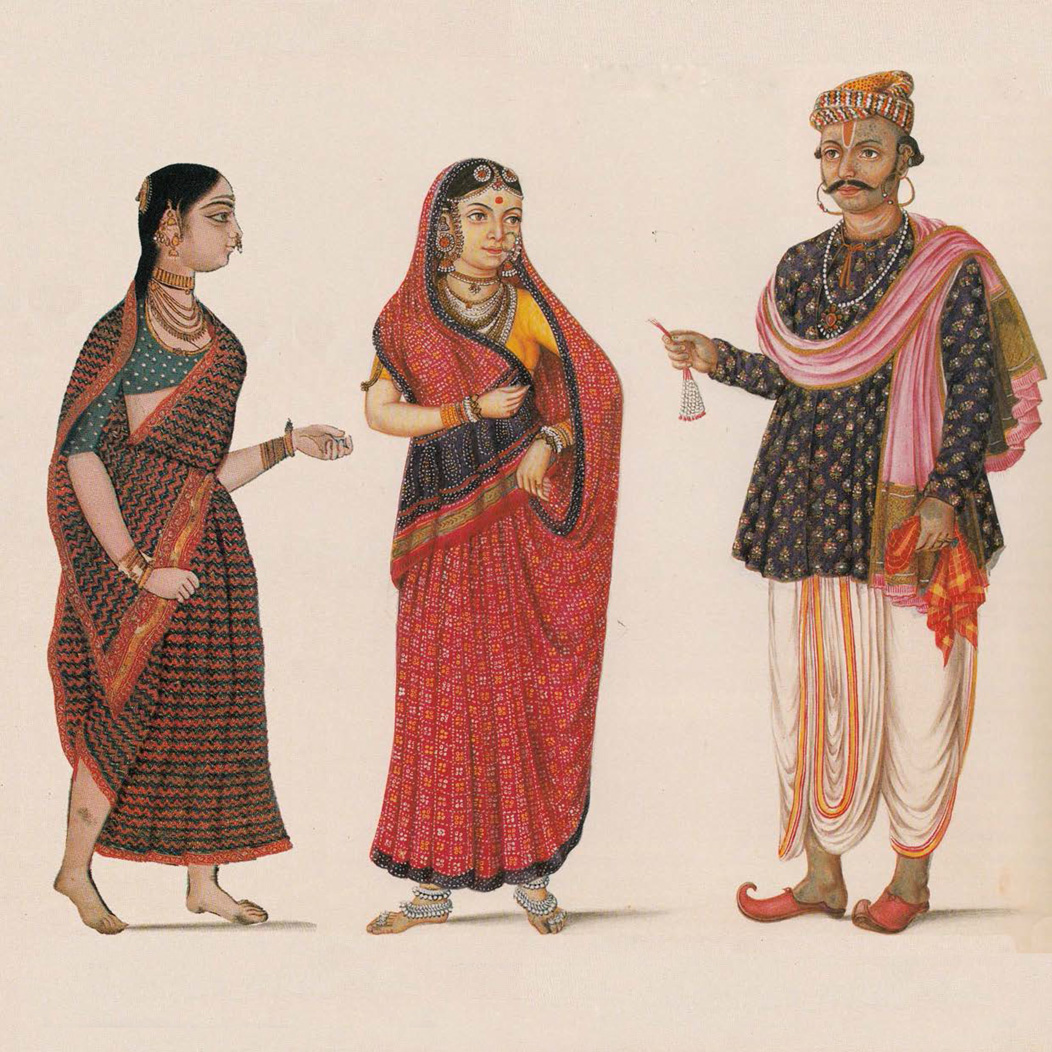Sindh and Rajasthan
The Sind region is believed to be the origin of the Khatri community, bandhani's major practitioners in India. Jamnagar, a city known for its particularly bright red dyes and bustling bandhani business was founded in 1540 by Jadeja Rajputs from Sind. Kachchh is the main center for intricate and sophisticated design work and rich colours that are in high demand by businessmen in Jamnagar, Ahmedabad, Mumbai and other parts of India.
In Rajasthan, bandhani is an important part of one’s identity, and is produced in many locations, with Jaipur, Udaipur and Bikaner among the most active. Bandhani chunaris (cloth worn over the head and shoulders by women) symbolize womanhood and marriage and the cotton red and yellow odhanis known as piliya (pila= yellow) are worn by young mothers. Laheriya, or “wave pattern” is used primarily in turbans, and created when material is rolled diagonally and tied by lightly binding threads before dyeing. Cotton bandhani turbans, saris and odhanis were made and worn in South India until the late 19th century while bandhani on dark blue cotton fabrics with white figurative patterns were made for local farming communities in Madhya Pradesh
